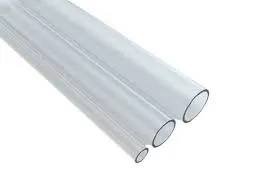Aug . 06, 2024 11:26 Back to list
Understanding Various Sizes of PVC Irrigation Pipes for Effective Agricultural Water Management
Understanding PVC Irrigation Pipe Sizes
Irrigation systems are essential for agricultural productivity, ensuring that crops receive adequate water supply while optimizing resource use. One key component of these systems is the irrigation piping, and among the various materials available, PVC (polyvinyl chloride) pipes stand out for their durability, affordability, and versatility. This article explores the sizes of PVC irrigation pipes, their significance, and considerations for selecting the right size.
The Importance of Pipe Size
The size of the irrigation pipe is crucial as it directly affects the efficiency of water delivery to crops. An inadequately sized pipe can lead to various problems, including insufficient water pressure, uneven water distribution, and increased wear on pumping equipment. Conversely, oversized pipes can be unnecessarily costly and may lead to higher installation and maintenance expenses.
When planning an irrigation system, it’s essential to consider factors such as the type of crops being grown, the size of the irrigated area, the water source, and the overall layout of the system. Understanding the standard sizes of PVC pipes can help in making informed decisions.
Standard Sizes of PVC Irrigation Pipes
PVC pipes come in various standard sizes, typically measured in terms of diameter in inches. The most common diameters for irrigation applications include
- 1 inch Often used for smaller systems or as lateral pipes that connect to emitters or sprinklers. - 1.5 inch Commonly employed for residential or small-scale agricultural applications, providing greater flow capacity. - 2 inch Suitable for medium-sized irrigation systems, allowing for increased water flow and pressure. - 3 inch Typically utilized in larger agricultural fields, where higher volumes of water are required. - 4 inch and above Used for substantial irrigation systems or mainlines that transport large amounts of water over long distances.
pvc irrigation pipe sizes

These standard sizes correspond to varying flow rates and pressure capacities, which need to be matched to the specific requirements of the irrigation system
.Factors Influencing Pipe Size Selection
1. Flow Rate Requirements The amount of water needed by the crops plays a significant role in determining pipe size. Flow rates are measured in gallons per minute (GPM), and larger pipes can accommodate higher flow rates. 2. Pressure Considerations The pressure within the irrigation system, which affects how far and evenly water can be distributed, also influences pipe size. PVC pipes can handle varying pressure levels, and selecting the correct diameter can help maintain optimal pressure throughout the system.
3. Irrigation Method Different irrigation methods (e.g., drip, sprinkler, or surface irrigation) may require specific pipe sizes. For instance, drip irrigation systems often use smaller-diameter pipes for precision watering directly to the root zone.
4. System Layout and Length The overall design and length of the irrigation system also dictate the appropriate pipe size. Longer runs may require larger pipes to prevent pressure loss over distance.
5. Future Expansion When designing an irrigation system, considering future needs is essential. Selecting a larger pipe can help accommodate potential growth in the irrigated area without the need for upgrades.
Conclusion
Selecting the appropriate PVC irrigation pipe size is vital for establishing an efficient and effective irrigation system. Farmers and land managers must carefully assess their water requirements, system design, and crop needs when choosing pipe sizes. By understanding the implications of pipe size on water flow and pressure, stakeholders can optimize their irrigation practices, leading to healthier crops and more sustainable water use. PVC pipes, with their range of sizes and reliable performance, serve as a robust solution in modern agricultural practices.
-
High-Quality PPR Pipes and Fittings Durable ERA PPR & PVC PPR Solutions
NewsJul.08,2025
-
Black HDPE Cutting Board - Durable, Non-Porous & Food Safe HDPE Plastic Cutting Board
NewsJul.08,2025
-
High-Quality CPVC Panel Durable HDPE & PVC Panels Supplier
NewsJul.08,2025
-
Double PE Welding Rod Supplier - High Strength, Durable & Versatile Welding Solutions
NewsJul.07,2025
-
High-Quality PVC-O Pipe Supplier Durable 75mm PVC Pipe & Connections Leading PVC Pipe Company
NewsJul.07,2025
-
HDPE Drainage Pipe Supplier – Durable & Corrosion-Resistant Solutions
NewsJul.06,2025

